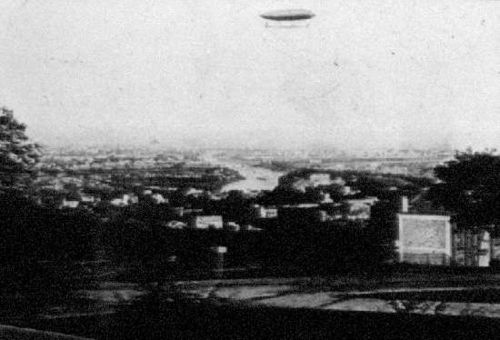
9 August 1884: At the parade grounds at Chalais-Meudon, a town on the banks of the Seine near Paris, France, engineers Charles Renard and Arthur Constantin Krebs made the first controllable free flight when they piloted their airship, La France, over an approximately 4¾ mile (7.6 kilometers) course and returned to their starting point. The airship completed the circuit in 20 minutes at an average speed of 15.75 feet per second (10.74 miles per hour, or 17.28 kilometers per hour).
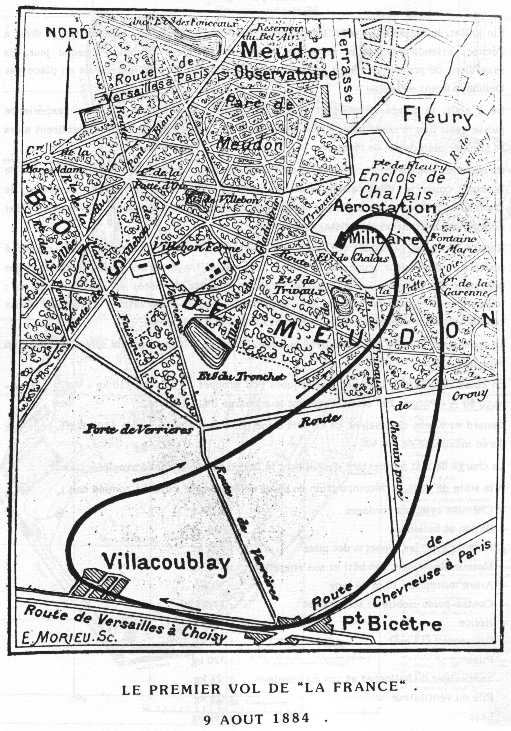
Charles Renard later said,
“As soon as we had reached the top of the wooden plateaus which surrounded the valley of Chalais we started the screw, and had the satisfaction off seeing the balloon immediately obey it, and readily follow ever turn of the rudder. We felt we were absolutely masters of our own movements, and that we could traverse the atmosphere in any direction as easily as a steam launch could make its evolutions on a calm lake. After having accomplished our purpose we turned our head toward the point of departure, and we soon saw it approaching us. The walls of the park of Chalais were passed anew, and our landing appeared at our feet about 1,00 feet below the car. The screw was then slowed down, and at a pull of the safety valve started the descent, during which, by means of the propeller and rudder, the balloon was maintained directly over the point where our assistants awaited us. Everything occurred according to our plan, and the car was soon resting quietly upon the lawn from which we had started.”
—The Practical Engineer, Volume 9, Number 371, Friday, 6 April 1894, Page 266, Column 1
From 9 August 1884 to 23 September 1885, La France made seven flights and was able to return to its starting point five times. On its final flight, it reached an average speed of 21.33 feet per second (14.54 miles per hour, or 23.40 kilometers per hour).

La France was a powered, steerable, gas balloon, approximately 167 feet long (50.9 meters) and 27½ feet (8.4 meters) in diameter. Buoyancy was provided by 65,000 cubic feet (1,841 cubic meters) of hydrogen.
Under the balloon envelope hung a 108 foot (32.9 meter) long gondola made of bamboo and covered with silk. This was where the airmen and any passengers, the 8½ horsepower (6.25 kilowatts) electric motor and a chromium chloride storage battery were placed. The motor weighed 220.5 pounds (100 kilograms), and the battery, 580 pounds (263 kilograms.)
At the forward end of the gondola was a four-bladed wooden propeller with a 23-foot (7.0 meters) diameter and 28-foot (2.4 meters) pitch, providing thrust to drive the airship. The propeller was driven by a 49 foot (14.9 meters) drive shaft. On the 9 August flight, the propeller turned 42 r.p.m. On later flights, this was increased to a maximum 57 r.p.m.
La France was controlled by a rudder and elevator. A sliding weight allowed for changes in the center of gravity.
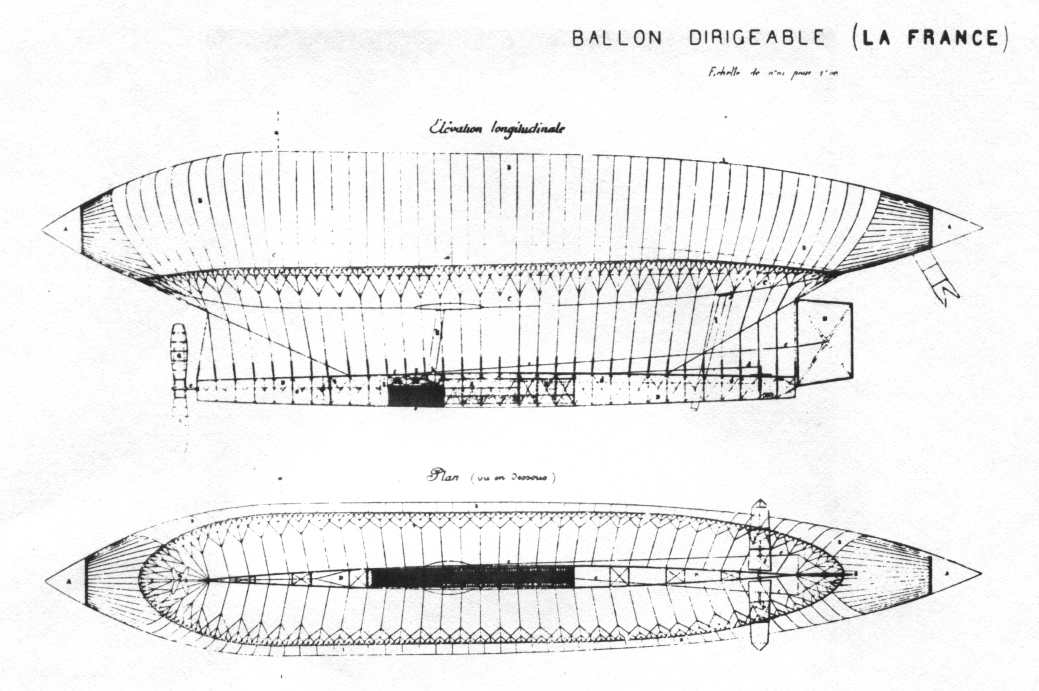
La France was designed and built by Captain Paul Renard, Captain Charles Renard and Captain Arthur Constantin Krebs, all officers of the French Armée de Terre Corps du Génie (Corps of Engineers) at the central military aeronautics establishment at Chalais-Meudon.
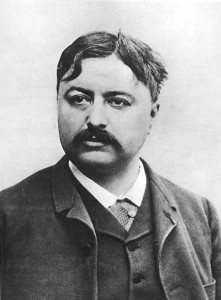
Charles Renard was born at Damblain, Viosges, France, 23 November 1847. In 1873, he had developed an unmanned glider which was controlled by a pendulum device linked to its control surfaces. The glider was flown from a tower at Arras.
Renard also developed the powered Renard Road Train, in which the trailers were powered by drive shafts from the forward power car, and each car was steered through a system of linkages attached to the car ahead of it. He also developed the concept of preferred numbers. (ISO 3)¹
Charles Renard remained in charge of the aeronautical establishment at Chalais-Meudon until his death. He committed suicide, 13 April 1905.
Arthur Constantin Krebs was born 16 November 1850 at Vesoul, France.
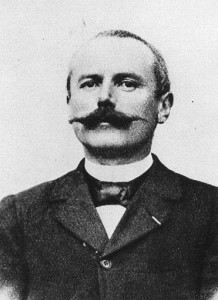
Krebs was a prolific inventor. Following his work with La France, he completed the development of Gymnote (Q1), the world’s first all-electric submarine. His work on automobiles was extensive. He developed the concept of the front engine/rear wheel drive (Systeme Panhard); engine balancing; caster in the steering and suspension system, which allowed the steering wheels to self-center; the steering wheel; shock absorbers; four-wheel drive and four-wheel steering, etc. He invented the electric brake dynomometer which is used to measure power output of engines.
Arthur Krebs died 22 March 1935.
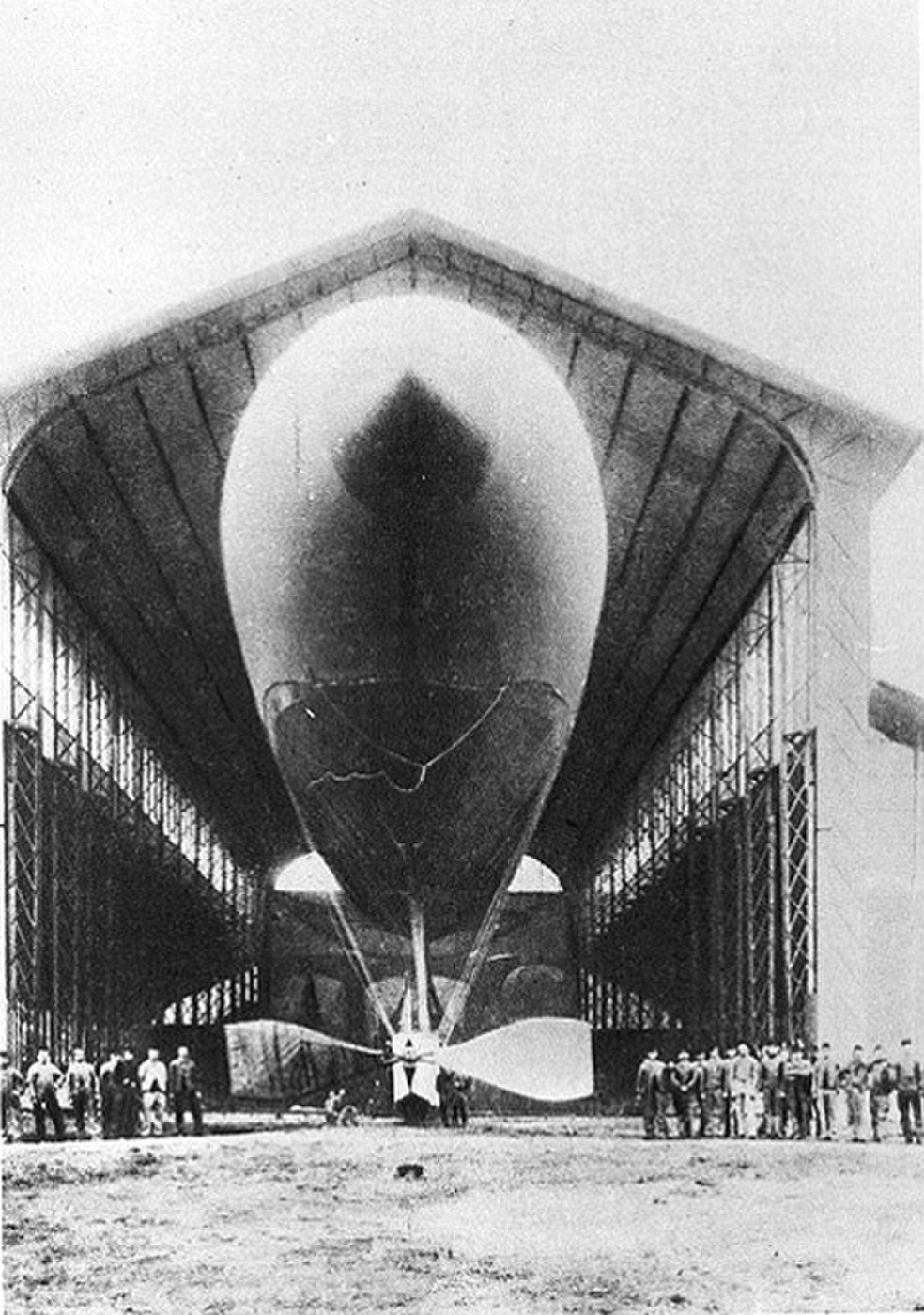
¹ “Preferred numbers were first utilized in France at the end of the nineteenth century. From 1877 to 1879, Captain Charles Renard, an officer in the engineer corps, made a rational study of the elements necessary in the construction of lighter-than-air aircraft. He computed the specifications for cotton rope according to a grading system, such that this element could be produced in advance without prejudice to the installations where such rope was subsequently to be utilized. Recognizing the advantage to be derived from the geometrical progression, he adopted, as a basis, a rope having a mass of a grams per metre, and as a grading system, a rule that would yield a tenth multiple of the value a after every fifth step of the series. . . .”
—ISO 17:1973, International Organization for Standardization
© 2017, Bryan R. Swopes